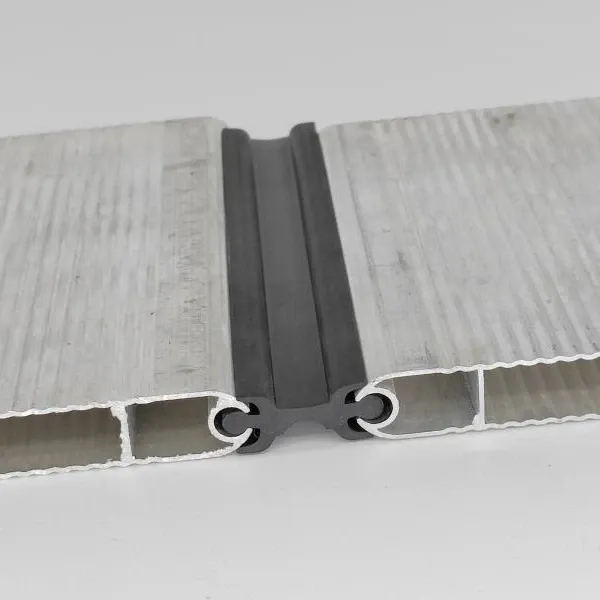The Ultimate Guide to Choosing the Best Garage Seal Strip for Your Home
aug . 15, 2024 08:23 Back to list
The Ultimate Guide to Choosing the Best Garage Seal Strip for Your Home
Choosing the Best Garage Seal Strips A Comprehensive Guide
A garage is an essential part of any home, providing shelter for vehicles, tools, and equipment. However, it can also be a gateway for unwanted elements such as dust, pests, and moisture. One of the best ways to protect your garage is by using high-quality garage seal strips. These strips act as barriers to seal gaps between the garage door and the floor, walls, and frame, ensuring that your garage remains clean and secure.
Understanding Garage Seal Strips
Garage seal strips, often referred to as garage door weather stripping, serve multiple purposes. They help to prevent drafts, block out water and debris, and deter pests from entering the garage. Seal strips are typically made of durable materials like rubber, vinyl, or foam, designed to withstand temperature fluctuations and wear over time.
Types of Garage Seal Strips
1. Bottom Seal Strips These are specifically designed to attach to the bottom of the garage door. A bottom seal strip helps create a tight seal against the ground, minimizing gaps that allow dirt, water, and pests to enter.
2. Side and Top Seal Strips These strips are installed along the sides and top of the garage door frame. They work in conjunction with bottom seals to ensure a complete barrier, preventing drafts and protecting against rain or snow intrusion.
3. Threshold Seals These seals are installed on the garage floor, acting as a physical barrier at the entrance. They work especially well in areas prone to flooding, directing water away from the garage floor.
Benefits of Using Garage Seal Strips
1. Energy Efficiency By sealing gaps, garage seal strips help regulate temperature, reducing heating and cooling costs. This is especially beneficial for climate-controlled garages.
2. Pest Prevention A well-sealed garage significantly reduces the likelihood of pests such as rodents and insects entering the space. Seal strips create barriers that are difficult for these unwanted visitors to breach.
best garage seal strip

3. Moisture Control In areas prone to heavy rain or flooding, seal strips can help keep water out, preventing potential damage to stored items and reducing the risk of mold and mildew.
4. Dust and Debris Protection By minimizing the ingress of outside elements, seal strips help keep the garage cleaner, reducing the frequency of cleaning and maintenance.
Selecting the Best Garage Seal Strips
When choosing the best garage seal strips for your needs, consider the following factors
1. Material Look for durable materials that withstand weather extremes. Rubber is a popular choice for its flexibility and longevity.
2. Size Measure the gaps around your garage door to select the appropriate width and height for the seal strips. A proper fit is crucial for effectiveness.
3. Installation Some seal strips come with adhesive backing for easy installation, while others may require more permanent fixtures like screws. Choose one that aligns with your DIY skills and preferences.
4. Cost Garage seal strips are available at various price points. While cost is essential, investing in high-quality strips can save you money in the long run by reducing energy bills and maintenance costs.
Conclusion
Investing in the best garage seal strips is a smart decision for any homeowner looking to enhance the functionality and security of their garage. By understanding the different types available and the benefits they provide, you can make an informed choice that meets your specific needs. A well-sealed garage not only protects your belongings but also contributes positively to your home’s overall energy efficiency and comfort. Embrace the advantages of garage seal strips today, and enjoy a cleaner, safer garage space.
-
LED Neon Rope Light Outdoor Companies: Durable & Bright Solutions
NewsAug.27,2025
-
Premium Window Seal Strip Adhesive: Manufacturers & Suppliers
NewsAug.26,2025
-
Best Window Seal Strip Adhesive Companies: Strong, Durable Seals
NewsAug.25,2025
-
Karcher A2004 Wet & Dry Vacuum Filter: Premium Replacement Cartridge
NewsAug.24,2025
-
Premium Vacuum Filter for Karcher VC 4, VC 6, VC 7 & Tineco A10, A11
NewsAug.23,2025
-
Hi-Flo HF155 Oil Filter KTM 250 EXC Racing 03-06 | OEM 580.38.005.000
NewsAug.22,2025
